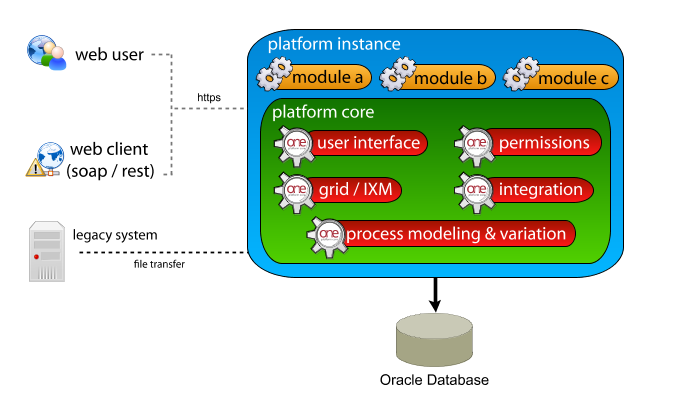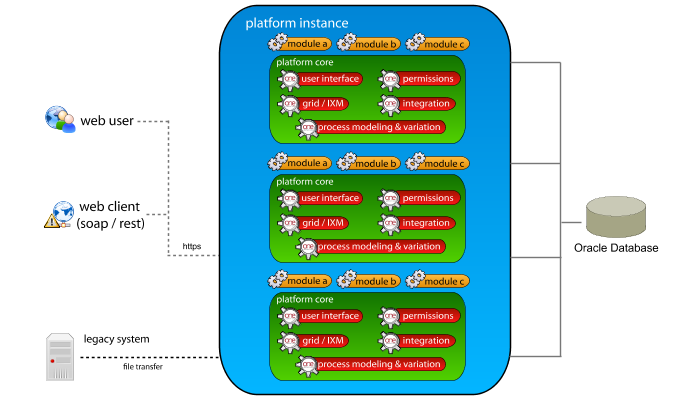High Level Architecture
Platform instances may be deployed as either traditional server-based installations or they may be deployed using One Network's Developer Network, a cloud computing infrastructure service. Since a server-based installation will vary depending on who is deploying it and where, we will confine our architectural discussion to what you will find on a typical Developer Network instance.
The overall architecture of Platform consists of a number of application services, connected to a shared Oracle™ database. One Network Platform provides several services, including:
Process Modeling and Variation for the control of business processes and models.
Permissions for controlling access to data using different roles within the various organizations able to connect to the application.
Distributed task execution and batch processing using the Computational Grid.
Planning and execution computations via IXM Engines.
User Interface services to process user interactions and disseminate those interactions the models that service them.
Integration services to process data inbound from and outbound to other systems.
This modular architecture allows for maximum scalability. A simple server set-up might look like Figure 1.1 where all of the services are housed on a single server.
Figure 1.1. A diagram of the high level architecture of a typical Platform instance hosted on One Network's Developer Network cloud computing infrastructure.

End users connect to the Platform application via a standard web browser; requests are routed through a sticky load balancer to Platform nodes for processing. As the business needs for this instance grows, its possible to add more servers to the landscape and dedicate those servers to particular processes. So a more evolved version of the case we saw earlier in Figure 1.1 can be seen in Figure 1.2.
Figure 1.2. More servers have been added. As your application's needs grow, you simply provision additional hardware.
In this instance, we see multiple production servers. You can configure these servers to work with specific request types. For example, you can reserve one server for integration and another for UI services. Scaling further is simply a matter of adding hardware and deploying platforms to the new servers.
Tip
You can host your instance on One Network Developer Network, also known as DevNet. This premium service allows you to provision and use hardware 'in the cloud'. You don't have to buy or set up any hardware. When you need to scale up, you can handle it using a point-and-click interface.